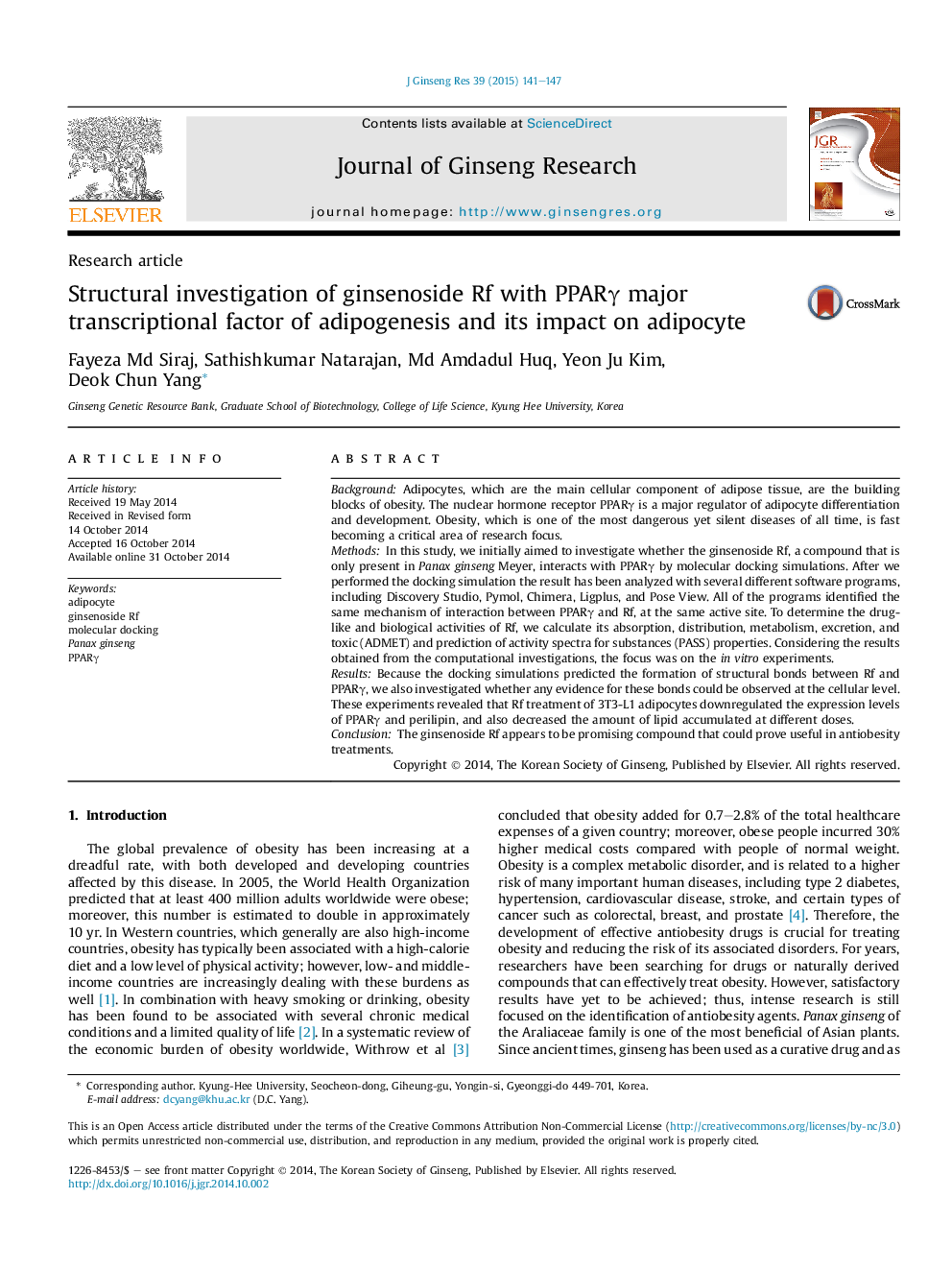| Article ID | Journal | Published Year | Pages | File Type |
|---|---|---|---|---|
| 3099341 | Journal of Ginseng Research | 2015 | 7 Pages |
BackgroundAdipocytes, which are the main cellular component of adipose tissue, are the building blocks of obesity. The nuclear hormone receptor PPARγ is a major regulator of adipocyte differentiation and development. Obesity, which is one of the most dangerous yet silent diseases of all time, is fast becoming a critical area of research focus.MethodsIn this study, we initially aimed to investigate whether the ginsenoside Rf, a compound that is only present in Panax ginseng Meyer, interacts with PPARγ by molecular docking simulations. After we performed the docking simulation the result has been analyzed with several different software programs, including Discovery Studio, Pymol, Chimera, Ligplus, and Pose View. All of the programs identified the same mechanism of interaction between PPARγ and Rf, at the same active site. To determine the drug-like and biological activities of Rf, we calculate its absorption, distribution, metabolism, excretion, and toxic (ADMET) and prediction of activity spectra for substances (PASS) properties. Considering the results obtained from the computational investigations, the focus was on the in vitro experiments.ResultsBecause the docking simulations predicted the formation of structural bonds between Rf and PPARγ, we also investigated whether any evidence for these bonds could be observed at the cellular level. These experiments revealed that Rf treatment of 3T3-L1 adipocytes downregulated the expression levels of PPARγ and perilipin, and also decreased the amount of lipid accumulated at different doses.ConclusionThe ginsenoside Rf appears to be promising compound that could prove useful in antiobesity treatments.
